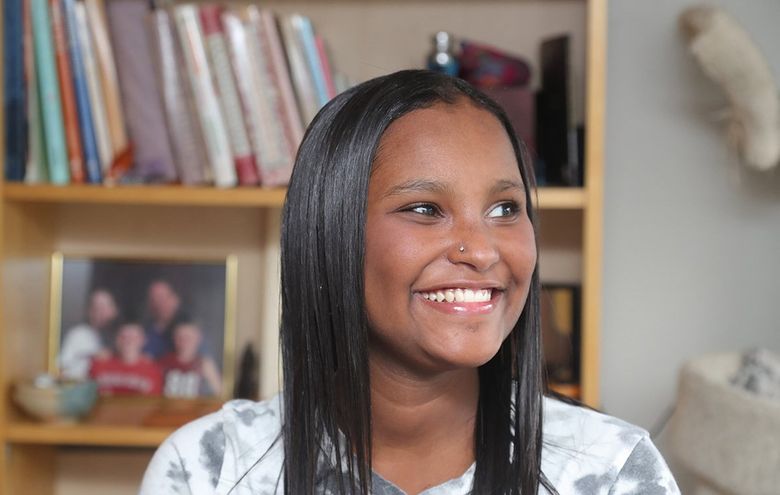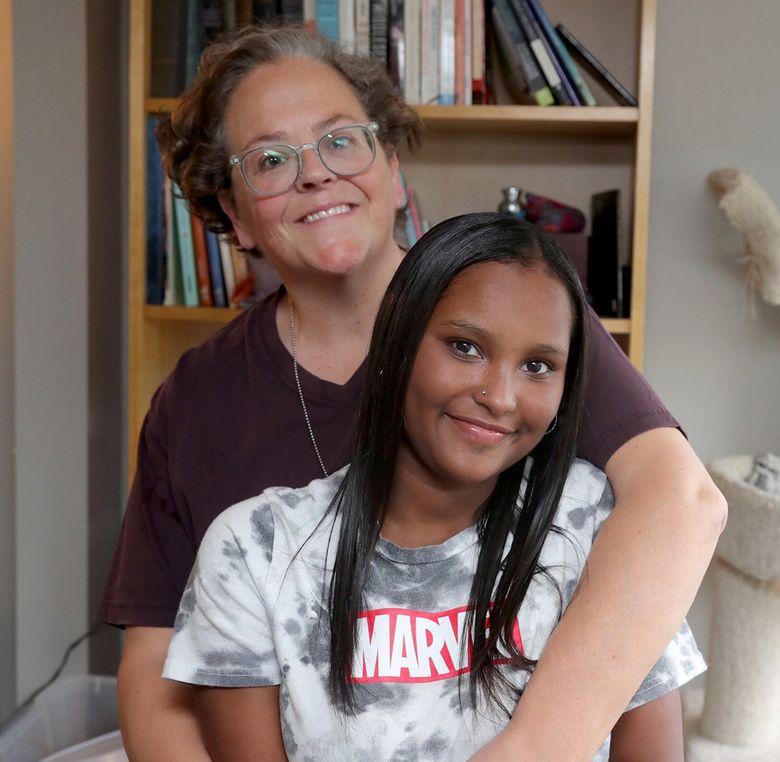

By Naomi Ishisaka Seattle Times columnist
Feven Breuner just wants to breathe.
That’s not been easy the past couple of months for the 14-year-old Summit Sierra High School student.
Like 1 in 12 people nationwide, Feven and I both have asthma. In the U.S., the condition is more prevalent among children and highest among Black people. According to the CDC, Washington has among the highest prevalence of asthma in the country — and it’s on the rise.
Feven was diagnosed years earlier, but it wasn’t until early September that the seriousness of her condition became painfully clear. It started as just a regular virus, but by the next day, she was coughing so hard she began vomiting. The coughing eased but she struggled to breathe and her oxygen levels dropped. Feven ended up in the Seattle Children’s hospital ER and after being stabilized, she was released. But then the first wave of wildfire smoke arrived.
Feven ended up back in the ER and then spent days in the ICU, trying to get her oxygen levels stabilized. When she was finally released, there were some periods of reprieve, but with the smoke and her asthma, her life had changed.
With smoke smothering the region, there was no more cheer practice, no more waiting outside to be picked up, no more going outside at all. Fatigue was ever present. She said with the smoke, every decision was a calculation. Even something as simple as taking out the trash required an evaluation of risk. Between staying inside to avoid smoke and being in the hospital, “It does make me feel left out sometimes,” she said.
She also has to worry about COVID-19. With the steroids she is taking for her asthma, she said, the efficacy of the vaccine is reduced, so she has not been able to get a booster, even though her asthma puts her at greater risk. It’s a pick your poison Catch-22.
Others don’t understand what it’s like for people like her, Feven said. When people called the smoke “annoying,” saying it made their eyes itch, she said she would think “I’m risking my life going outside sometimes. People don’t understand how the smallest little things can trigger an asthma attack really easily. … I never in a million years thought that would be me.”
When I spoke with Feven on Thursday, air quality in the Seattle area had worsened to the “very unhealthy” level and she and her mom were heading back to Seattle Children’s ER, again.
“I’m hoping now that people are seeing what even just a bit of smoke can do to people who started out being fine,” Feven said, “I’m hoping that it’s going to help educate people in making places safer.”
As people with asthma, Feven and I are part of the “sensitive group” that are included in the “unhealthy for sensitive groups” air quality alert level.
We have lots of company. Also in that group are people over 65, children under 18, pregnant people, people with lung or heart issues, people working outdoors, people of color and low-income people, according to the state Department of Health’s Executive Office of Public Affairs and Equity. And everyone is at risk from particle pollution caused by wildfire smoke, it said, even if you’re not in the sensitive group club.
But the messaging we saw over the past month and a half did not reflect that urgency. While those of us at higher risk obsessively refreshed air quality sites like AirNow, PurpleAir and IQAir to figure out if it’s safe to go outside, many others described poor air quality days as “beautiful,” just because the sun was shining, even though the air was not safe to breathe. It felt like when some of us were gasping for breath, everyone else just had a collective shrug and didn’t think anything of it.
Last Saturday, for example, during the epic six-hour Mariners game where few, if any, fans were seen wearing masks, the air quality level was “unhealthy” for all and the smoke was thick enough to be visible on screen, an announcer still said it was a “perfect Seattle day.”
The smoke problem is getting worse. Over the past decade, the number of people exposed to dangerous levels of wildfire particles in the U.S. has increased 27-fold, according to a study published in September in the Environmental Science & Technology journal.
But as with most things related to public health and the environment, the impacts are not felt equally.
Paulina López, the executive director of the Duwamish River Community Coalition, said that while the rest of the region starts to worry about air quality when wildfire smoke arrives, it’s something the racially diverse Duwamish River valley must think about all the time.
López said that due to the geography of the area and the prevalence of industrial and transportation pollution, wildfire smoke events compound to create even greater risk. According to Climate Solutions, a nonprofit focused on clean energy solutions, smoke can act like a “lid” over a community, especially low-lying areas like the South Sound and South Seattle, which already have transportation-related pollution, increasing risks to lung health.
López noted a 2013 report conducted by DRCC and Just Health Action that found Georgetown and South Park residents had a 13-year-lower life expectancy than residents of wealthier Seattle neighborhoods. That was not just due to pollution, but also chronic illness and other issues including lack of access to quality food and outdoor space.
Residents in the area — South Park, Georgetown and southwest Beacon Hill — have the highest rates of hospitalization due to asthma in the county, according to InvestigateWest.
“Now that climate change is coming,” López said, “we know that more severe and more frequent wildfire smoke will be coming. So it definitely raises this concern of you need to move faster to protect the Duwamish Valley.”
More must be done to protect vulnerable communities, she said. In addition to more restrictions on industrial pollution and transportation pollution, she said indoor air filters need to be distributed to those most at risk for air pollution and communication around risks needs to be clearer and in more languages.
One change on the horizon is the recently passed state Climate Commitment Act, which would create a “cap-and-invest” system to reduce emissions from the largest emitters or purchase allowances. Part of those revenues would help improve indoor air quality such as incentivizing heat pumps.
But in the meantime, those of us in sensitive groups will be looking ahead to the next Smoketober with fear and dread.
